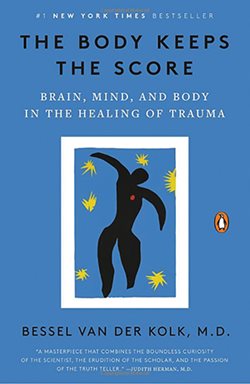Summer 2023 - Vol. 18, No. 2
FROM THE EDITOR'S DESK
The Body Keeps the Score
A Book Review
Corey D. Fogleman, MD, FAAFP
Editor in Chief
In this issue of
JLGH, we feature two articles describing medical trauma, one of many risks our patients face. This prompted me to take Dr. Cherise Hamblin’s advice
1 and reread
The Body Keeps the Score, the 2014 bestseller by Bessel van der Kolk. In it the author posits that many of the depressive, anxious, disorganized emotional symptoms we as clinicians have come to label as aspects of bipolar disorder or major depression are in fact linked to trauma. Further, we can treat these and the accompanying somatic concerns by addressing the physical as much as the psychological self.
This theory has merit. More than 50% of people who seek psychiatric care report having been physically abused, abandoned, neglected, or sexually abused as children, or have witnessed these atrocities within their own families. Further, more than 600,000 cases of child abuse and neglect are substantiated each year in this country; in Pennsylvania alone, there are more than 4,000 such cases every year.
2

By Bessel van der Kolk, MD, New York, Penguin, reprint 2015, 464 p, 19.00 paperback
Certainly, trauma’s prevalence is wide reaching, and it can have any number of long-term effects, including severing connections or limiting the development of those connections that allow accurate interpretation of body systems. This can lead to hard-to-diagnose somatic concerns.
The trauma-based theory suggests that adaptive mechanisms, learned or stumbled upon, innate or executed, may be the source of many of the symptoms we as clinicians see in our patients. Individuals may lose — or experience breakdown of the basic ability to manage — control of their bowels, bladder, appetite, and social connections, and the failure to regulate basic functions can impact so many aspects of our lives. Obesity, drug use disorder, and the capacity to attend to school, job, or family responsibilities all may follow.
This theory is not necessarily in opposition to the organ-based disease model of mental health, one that suggests patients with generalized anxiety have an intrinsic chemical imbalance. Yet, is it a sign of success that one in 10 Americans now takes antidepressants? One wonders how well pharmacological agents may work in the long run. Whom among us isn’t worried that the side effects of the antipsychotics we prescribe might not be worth the benefit they provide? Do these agents themselves interfere with our capacity for maturity and creating connections?
Thus, it would seem, many patients who present with psychiatric and/or somatic concerns may be harboring a trauma history. What should we be asking? This is certainly a social determinant of health.
Questions to probe further might include: “Who do you count on in your everyday life?” “When you are sick, who helps comfort and connect you to medical care?” and “Who do you confide in?” When referencing one’s maturation, we might inquire about who in the family was affectionate, who treated the patient like they were special, and who made and enforced the rules. Further, it may be worth asking what features of a patient’s history they think helps define them.
Van der Kolk’s research reinforces that our brains are designed to function within social groups. Thus, mirror neurons explain some of our capacity to feel empathy, to synchronize our mood and language, to connect. Trauma treatment might entail finding ways to reactivate and safely mirror and be mirrored by others, to feel grounded in the present and with purpose. One of the most compelling aspects of this trauma-based theory is how Van der Kolk champions our capacity to recalibrate the autonomic nervous system and aspects of our “lizard brain,” where emotional reactions are out of reach of our logical mind. His research and writing suggest opportunities for treatment, many unconventional. Means to monitor and enhance heart rate variability may help restore mind-body connections within us. Further, breath exercises, chanting, martial arts, and group activities that activate personal rhythms — like drumming and dancing — help us coordinate with social networks and reconnect and reorganize.
There is still a role for cognitive behavioral therapy, the most well-studied and well-documented psychological technique, but just as valuable may be interventions that improve mindfulness, utilize therapeutic touch, and activate the body. Therefore, Van der Kolk advocates eye movement desensitization and reprocessing (EMDR) and activities such as dance, yoga, martial arts, and crafting.
Anecdotal evidence even suggests that improv-theater and acting workshops may help patients across the spectrum of psychiatric disease to achieve breakthroughs when it comes to reconnecting the body and mind.
Like any writer who knows his area intimately, this author pulls back the curtain, yet readers may well appreciate the light he shines on the politics that have shaped updates to the
Diagnostic and Statistical Manual of Mental Disorders. Overall, however, this text — now celebrating its 10th year in publication — continues to offer insights nearly any clinician will value. It is well worth the read.
I hope you’ll enjoy the trauma-informed care articles that follow, along with all this issue of
JLGH has to offer!
REFERENCES
1. Dr. Hamblin leads a health equity book club through Patients R Waiting. For more information, visit
PatientsRWaiting.com.
2. Child Maltreatment 2020. U.S. Department of Health and Human Services, Administration on Children, Youth and Families Children’s Bureau. Accessed May 22, 2023.
https://www.acf.hhs.gov/sites/default/files/documents/cb/cm2020.pdf